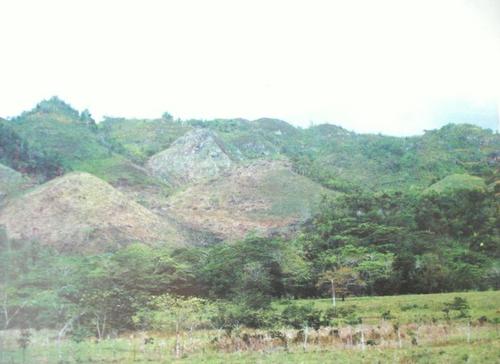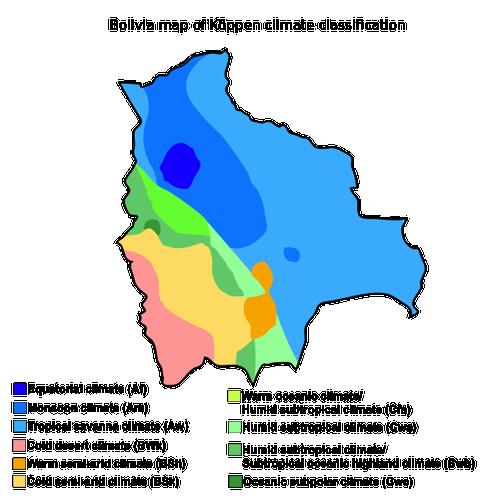BOLIVIA
Climate and Weather

Climate and Weather
Climate and Weather
The Andean massifs divide Bolivia into climatic zones and are the determining factor for the climate. In the northern Amazon region, the climate is tropical and humid, in the southeast it is dry and hot, in the valleys it is quite cool and in the highlands it is cold. The rainy season falls in the summer, from December to April. The winter that lasts from May to August is the dry season.
Another way to roughly classify the climate is the altitude at which villages and cities are located. Above 4000 meters it is usually cold (tierra fría), at night even down to –20 °C. Between 2000 and 4000 meters it is moderately warm to cold. Between 1500 and 2500 meters it is often pleasant subtropical weather (tierra templada). Below 1000 meters it is generally tropical warm (tierra caliente).
 Cordillera Oriental BoliviaPhoto: Fotord CC 4.0 International no changes made
Cordillera Oriental BoliviaPhoto: Fotord CC 4.0 International no changes made
Most snow falls on the eastern mountain range, the Cordillera Oriental, and a lot of rain on the lower parts. The western mountain range, the Cordillera Occidental, has very little rainfall. Due to the constant temperature (9 °C) of Lake Titicaca, there is a mild climate around this lake. In the south and southwest corner of the country it is getting colder and cold in winter. In the high Andes mountains, the winter, which lasts from May to September, is sunny and dry. At 4000 meters altitude it is 10-15 °C, but it feels warmer due to the bright sun. At night, the temperature drops below freezing. The average summer temperature is often only a few degrees higher than in winter because it often rains and is cloudy in the summer. La Paz, for example, is located at an altitude of 3658 meters; in January the average is 10 °C and in July 7 °C; there is an average of 572 mm of rainfall per year.
 Bolivia Climate ZonesPhoto: Ali Zifan CC 4.0 International no changes made
Bolivia Climate ZonesPhoto: Ali Zifan CC 4.0 International no changes made
In the valleys between the middle-high mountain area in the east, it is very rainy and subtropical warm. This area turns into valleys (valles) with less rain, and then only in the rainy season from December to April. In the lowest valleys of the Andes it is tropically warm. The lowlands have a tropical, humid climate. It never freezes here, but it can suddenly cool sharply when the Surazo blows, a cool south wind. Here, too, most rain falls in the summer and this can even lead to major flooding because the rivers cannot process the large amounts of water. Concepción is located at an altitude of 490 meters; in January the average is 24 °C and in July 20 °C; there is an average of 1141 mm of rainfall per year. Because Bolivia is located in the southern hemisphere, it is summer when it is winter here and vice versa.
Sources
Bijl, Y. van der / Reishandboek Bolivia
Elmar
Lindert, P. van / Bolivia : mensen, politiek, economie, cultuur
Novib
Schimmel, K. / Bolivia
Chelsea House Publishers
Sprey, J. / Bolivia
Gottmer
Te gast in Bolivia
Informatie Verre Reizen
CIA - World Factbook
BBC - Country Profiles
Copyright: Team The World of Info